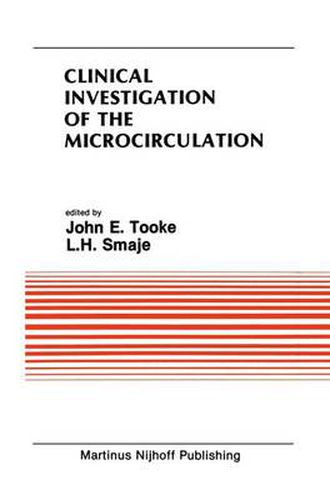Readings Newsletter
Become a Readings Member to make your shopping experience even easier.
Sign in or sign up for free!
You’re not far away from qualifying for FREE standard shipping within Australia
You’ve qualified for FREE standard shipping within Australia
The cart is loading…






This title is printed to order. This book may have been self-published. If so, we cannot guarantee the quality of the content. In the main most books will have gone through the editing process however some may not. We therefore suggest that you be aware of this before ordering this book. If in doubt check either the author or publisher’s details as we are unable to accept any returns unless they are faulty. Please contact us if you have any questions.
In 1628 William Harvey published his discovery of the existence of the microcirculation which he deduced from careful anatomical and physiological study. Thirty-three years later, Malpighi confirmed the presence of capillaries through direct microscopical observation. Subsequent scientific advance has been slow, and in view of the fact that microvascular in the genesis and expression of many pathophysiology may be implicated diseases, our know ledge of human microvascular function is surprisingly limited. This ignorance attests to the difficulty of studying something that is both minute and inaccessible without disturbing the quantity that is being measured. In the last fifteen years, however, direct techniques have been developed for studying human microvascular pressure, flow and permeability. These methods have provided new insights into human microvascular function in health and disease. At the same time there has been a steady growth of new indirect techniques based on a w ide range of physical principles that reflect some or other aspect of microvascular function.
$9.00 standard shipping within Australia
FREE standard shipping within Australia for orders over $100.00
Express & International shipping calculated at checkout
This title is printed to order. This book may have been self-published. If so, we cannot guarantee the quality of the content. In the main most books will have gone through the editing process however some may not. We therefore suggest that you be aware of this before ordering this book. If in doubt check either the author or publisher’s details as we are unable to accept any returns unless they are faulty. Please contact us if you have any questions.
In 1628 William Harvey published his discovery of the existence of the microcirculation which he deduced from careful anatomical and physiological study. Thirty-three years later, Malpighi confirmed the presence of capillaries through direct microscopical observation. Subsequent scientific advance has been slow, and in view of the fact that microvascular in the genesis and expression of many pathophysiology may be implicated diseases, our know ledge of human microvascular function is surprisingly limited. This ignorance attests to the difficulty of studying something that is both minute and inaccessible without disturbing the quantity that is being measured. In the last fifteen years, however, direct techniques have been developed for studying human microvascular pressure, flow and permeability. These methods have provided new insights into human microvascular function in health and disease. At the same time there has been a steady growth of new indirect techniques based on a w ide range of physical principles that reflect some or other aspect of microvascular function.